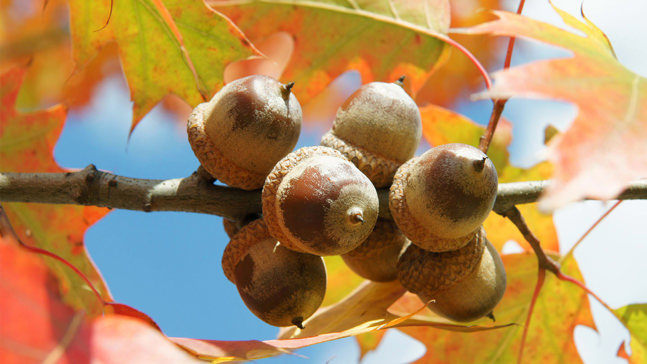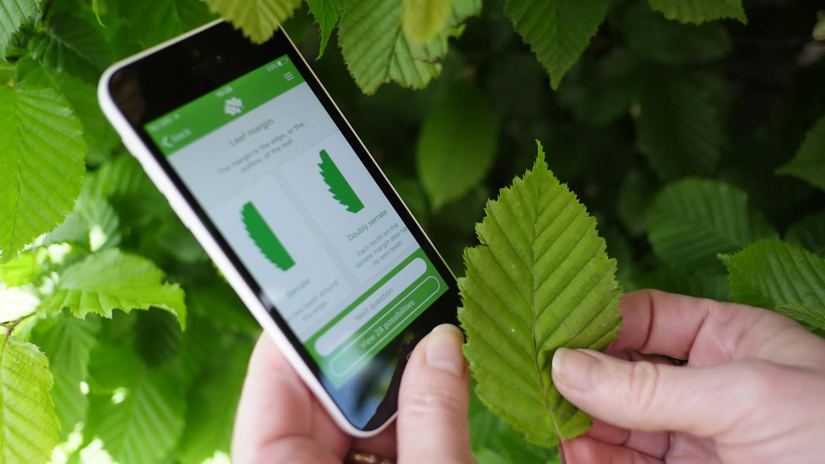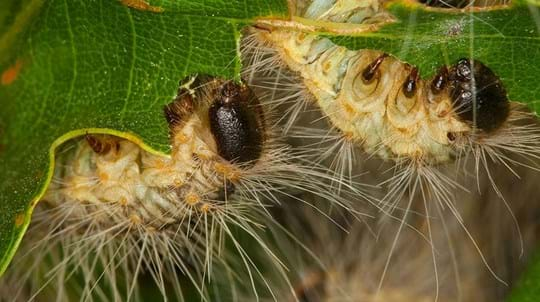
Credit: Zoonar GmbH / Alamy Stock Photo
Leaves
Similar to those of English and sessile oaks, but more pointed. They have a few lobes each with several teeth and pointed, whiskery tips. Dark green in colour, they have a paler, matted appearance on the underside, and fade to a bright red before falling in autumn.




















